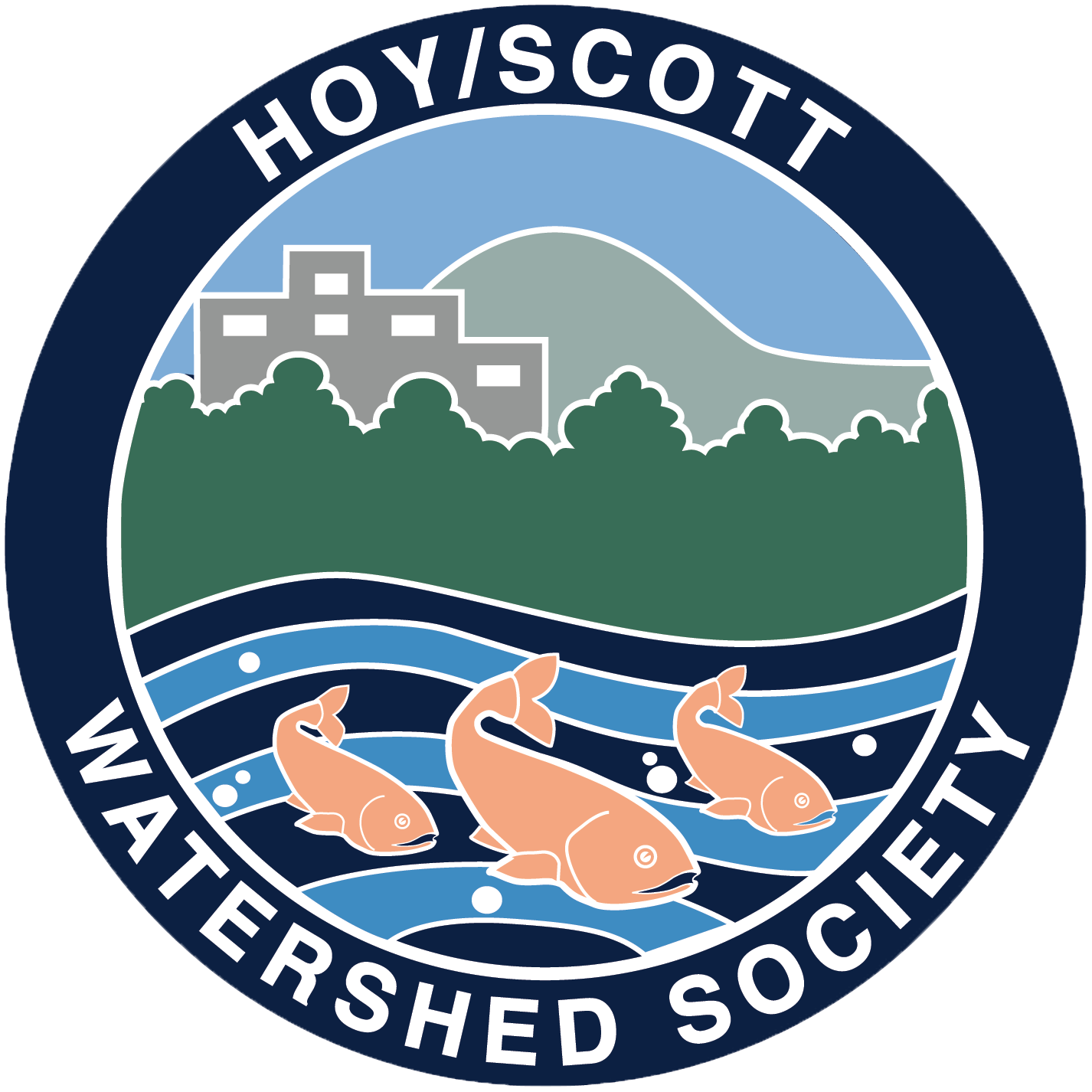Our spawner survey crew recently got some hands on experience with bio sampling salmon carcasses. (HSWS photo)
Hoy/Scott Watershed Society director, Rodney Lee led our spawner survey for 2023.
Seven of our volunteers assisted in 13 surveys and put in a total of 40.5 hours.
Spawner surveys are a basic form of stock assessment where the data can be used to gauge the health of salmon returns. In short, we walk the creek and count live and dead salmon (by species) to get a sense of the number of returning fish. Data is submitted to the Streamkeeper’s database as well as to the Department of Fisheries and Oceans Canada (DFO).
Participants walk in chest waders in and around the stream including stepping over fallen trees, walking on in-stream rocks and muddy banks, and crouching under overhanging tree branches to identify salmon species targeting chum and coho but occasionally other species (chinook, pink) may have been seen.
The weekly survey area was the stretch of Hoy Creek from the Johnson St. pool (between Glen and Guildford) to Hoy Creek Hatchery in Coquitlam and statistics were taken from October through to January.
Here are the survey details which provide totals of carcasses for chum and coho, as well as peak live counts. We have compared them to our 2021 and 2022 results in the chart below.
Volunteers measure the salmon and record findings. (HSWS photo)
2023 Spawner Survey Data and Comparison to 2022 and 2021
*Please note that this exercise is not a population estimate and annual results can be affected by several factors including weather patterns.
NOTE: Should you see salmon in the creek that have been cut in half, or have the tail or head cut off, from October through December that could mean those salmon have been marked for the annual Salmon Spawner Survey. We count live and dead fish weekly in a designated stretch of the stream. The dead salmon are cut as to not double count the dead fish the next week. This helps get an absolute count of salmon that have spawned in a particular area of a stream.















